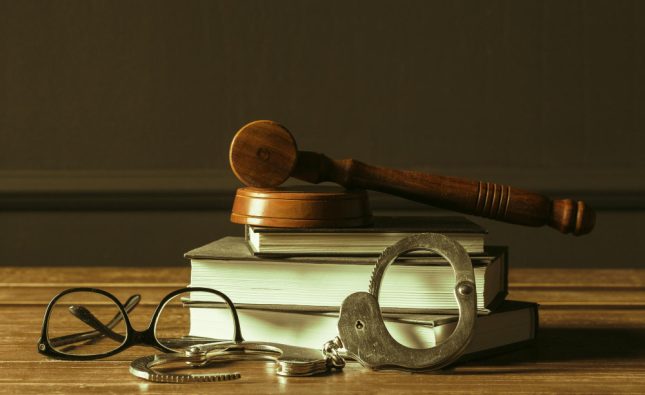
Have you ever heard of the phrase “innocent until proven guilty”? Well, in the world of civil asset forfeiture, that saying seems to hold no value. Civil asset forfeiture is a legal process used by law enforcement officials to seize assets suspected of involvement in criminal activity – without even charging their owner with a crime! This legalized robbery has been happening for decades and continues to raise questions about justice and fairness in our society. In this blog post, we will dive deep into what civil asset forfeiture is, how it works, and why it’s so controversial. Get ready to learn more about this alarming practice that could affect anyone at any time.
What is civil asset forfeiture?
Civil asset forfeiture is a legal process through which law enforcement officials can seize and keep property suspected of being involved in criminal activity, even if the owner is not charged with or convicted of a crime. In many cases, the owner does not even need to be accused of wrongdoing; the mere suspicion that the property was used in a crime is enough to trigger forfeiture proceedings.
Civil asset forfeiture has been around for centuries, but it has become increasingly common and controversial in recent years. Law enforcement agencies argue that it is a vital tool for combating crime, while critics say it undermines due process and civil liberties.
There are two main types of civil asset forfeiture: judicial forfeiture and administrative forfeiture. Judicial forfeiture occurs when a court orders the seizure of property after finding probable cause to believe it was involved in criminal activity. Administrative forfeiture, on the other hand, allows law enforcement to seize property without going through the courts; instead, they must simply give notice to the owner and give them an opportunity to contest the seizure.
Both types of forfeiture have their detractors. Critics of judicial forfeiture argue that it gives too much power to law enforcement and can be abused; they also point out that many people who have their property seized are never charged with or convicted of any crime. Administrative forfeiture, meanwhile, has been criticized for depriving people of their due process rights; because owners do not have to be charged with or convicted of a crime, they may never even know that their property has been seized until
How does civil asset forfeiture work?
In civil asset forfeiture, the government can take your property without ever charging you with a crime. Law enforcement simply needs to allege that your property was involved in criminal activity, and they can seize it. Once your property is seized, you have to go through a lengthy, complicated, and often expensive legal process to try to get it back—even if you’re never charged with a crime.
How does civil asset forfeiture work? The process usually starts when law enforcement officers seize property they believe is connected to a crime. The officers then file a notice of seizure with a local court. If the property is worth more than $500, the case goes to federal court.
At this point, the government has the burden of proving that the property was involved in criminal activity. But in many cases, the government only needs to show that there is a “preponderance of the evidence”—meaning that it’s more likely than not that the property was used in a crime. This standard is much lower than “beyond a reasonable doubt,” which is the standard used in criminal cases.
If the government meets its burden of proof, then the court will order the forfeiture of the property. However, if you can prove that you had no knowledge of or involvement in any criminal activity associated with your property, then you may be able to keep it.
Once your property is forfeited, it becomes the property of the government
Who does civil asset forfeiture impact?
There are many people who are impacted by civil asset forfeiture. Some of these people include:
-People who have had their property seized by the government, even though they have not been charged with a crime
-People who have been charged with a crime, but have not yet been convicted
-People who have been convicted of a crime, but may not have had their property seized as part of their sentence
In general, civil asset forfeiture can have a significant impact on anyone who has come into contact with the criminal justice system. This is because, in many cases, the government can seize your property without ever charging you with a crime. And even if you are eventually charged and convicted of a crime, your property may still be subject to forfeiture.
Why is civil asset forfeiture controversial?
When law enforcement seizes property from someone suspected of a crime, it’s called civil asset forfeiture. The police don’t have to charge the owner with a crime—or even arrest them—to take away their stuff.
This process has been controversial for a number of reasons. First, it disproportionately affects low-income people and people of color. Second, it gives law enforcement agencies a financial incentive to seize property: they get to keep whatever they take. This creates a perverse incentive for police to abuse the process and seize property from innocent people.
Third, civil asset forfeiture is often used to take away people’s constitutional rights without due process of law. The Fourth Amendment protects Americans from unreasonable searches and seizures, but civil asset forfeiture allows the government to take away your property without ever charging you with a crime, let alone convicting you.
Fourth, civil asset forfeiture violates the principle of innocent until proven guilty. In our criminal justice system, you are supposed to be presumed innocent until proven guilty beyond a reasonable doubt in a court of law. But with civil asset forfeiture, the government can take away your property without ever having to prove that you did anything wrong.
Finally, civil asset forfeiture undermines fairness and equality before the law. If the government can take away your property without due process or any finding of guilt, then nobody is truly safe from having their property seized by the state.
What are some proposed solutions to civil asset forfeiture?
There are many proposed solutions to civil asset forfeiture, but no one solution is perfect. Some propose more regulation of the practice, while others propose abolishing it altogether. Here are some of the most commonly proposed solutions:
– More transparency and oversight: Many people believe that there should be more transparency and oversight when it comes to civil asset forfeiture. This would make it more difficult for police departments to abuse the system and would help ensure that only legitimate assets are seized.
– Raising the burden of proof: Under current law, the burden of proof is on the owner of the asset to prove that it was not obtained through illegal activity. Some propose raising this burden of proof so that the government would have to prove that an asset was obtained through illegal activity.
– Requiring a criminal conviction: Another proposal is to require a criminal conviction before assets can be forfeited. This would protect innocent people from having their assets seized without due process.
– Abolishing civil asset forfeiture: Some believe that civil asset forfeiture is an unconstitutional practice that should be abolished altogether. This would likely require a constitutional amendment, as the practice is currently enshrined in federal law.
Conclusion
Civil asset forfeiture is a legal practice that allows law enforcement to seize assets without necessarily having to make an arrest or charge someone with a crime. While it is meant to help the police combat organized crime, it has been abused by authorities who have used it as a way of extorting money from innocent citizens. It is important for people to understand how civil asset forfeiture works and what measures can be taken if their property has been seized illegally. Hopefully this article has given readers an insight into this complex issue so that they can better protect themselves against unlawful seizures in the future.










